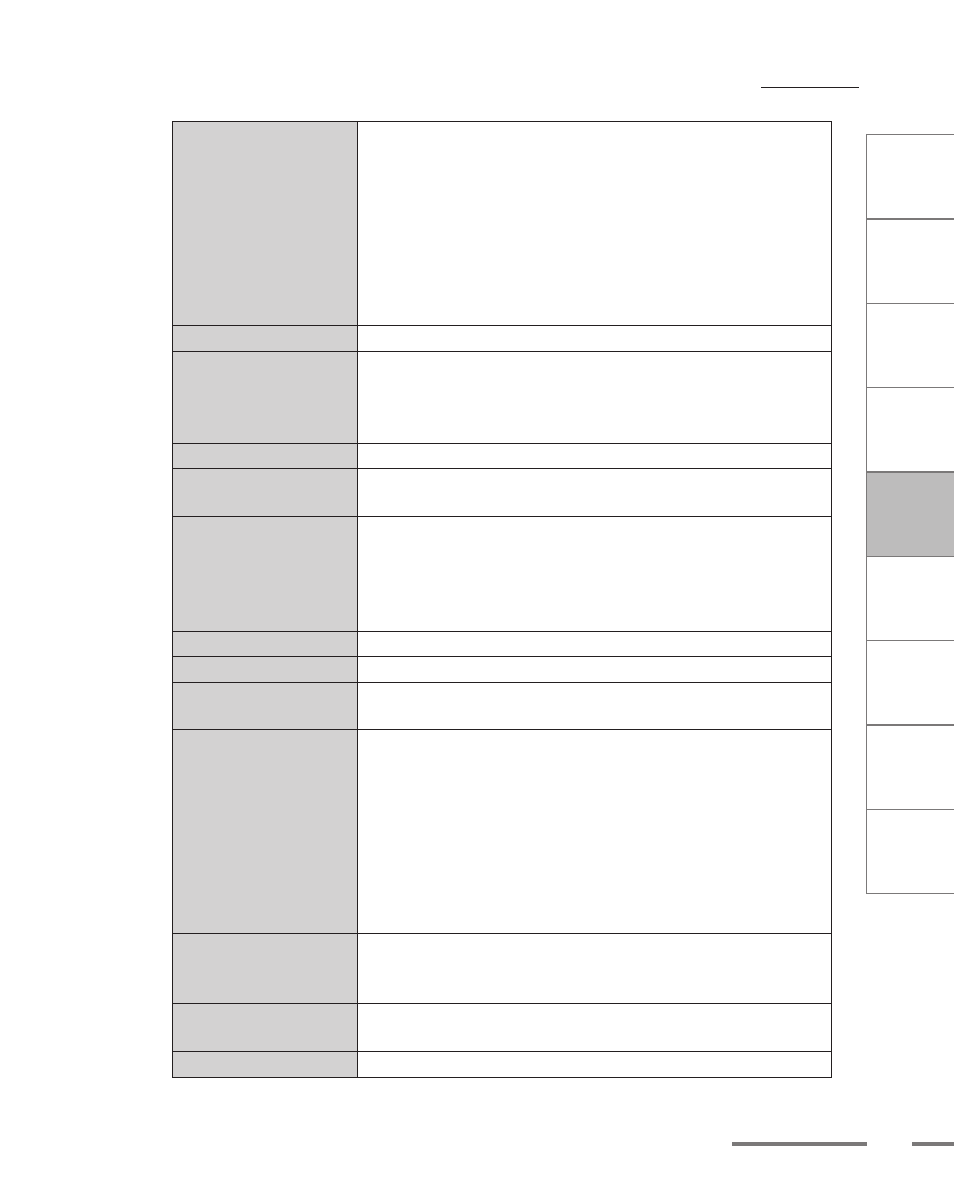Source tab – Grass Valley ProCoder 3 User Manual
Page 53

CHAPTER
1
CHAPTER
CHAPTER
3
CHAPTER
4
CHAPTER
5
CHAPTER
6
CHAPTER
7
C
o n
t e
n t
s
I n
t r
o
d
u c
t i
o n
I n
s t
a l l
a t i
o n
ProCoder 3
W
i z
a r
d
Using ProCoder
Helpful Hints
ProCoder
Reference
Glossary
Index
53
Source Tab
Black/White Correction This filter lets you adjust and control the levels of black and white
pixels in your video. By adjusting the sliders, you can specify at
which point a pixel will become black and/or white. The higher the
setting, the more nearly black pixels will be converted to true black
and vice versa. This works best if you are encoding video for the
Web and need to adjust the black and/or white levels of broadcast
video so that they are truly black or white. It’s also useful for making
white titles on a black background more legible when viewing on a
computer monitor.
Blur
This filter blurs the video in a rectangular pattern.
Broadcast Color Safe
Some colors that can be displayed on a computer cannot be
displayed on television or video output. This filter restricts the
colors in the source to only colors that are safe for television and
video broadcast.
Circular Blur
This filter blurs the video in a circular pattern.
Color Correction
This filter allows you to adjust the brightness, contrast, hue and
saturation of your video image.
Fade In/Out
This filter applies a fade in and/or out to your video in order to
aid the encoding process. You should use this filter if your source
video has a lot of fast motion in the first few frames. The fade in
gives ProCoder a “running start” so it can encode your video more
efficiently.
Gamma Correction
This filter adjusts your video’s gamma settings.
Gaussian Blur
This filter applies a Gaussian blur to the video.
Median
This filter is designed to improve picture quality by removing
single-pixel defects without affecting the sharpness.
Pulldown
This filter offers conversion without interpolation for progressive-
to-interlaced (i.e. film-to-video) file conversion. This preserves full
spatial image quality and creates target fields that are selected from
the nearest temporal source frame. Displaying the resulting file
on a progressive display, such as a computer monitor, produces
very noticeable interlacing artifacts. However, displaying this on an
interlaced display, such as a television, produces very good image
quality. This method is generally used when cinematographic
footage is encoded to a DVD and played on a TV.
Relative Crop
Remove unwanted edges on the video with this filter. This is often
used for removing any edge blanking or other unwanted video
information from the top or bottom of the video frame.
Rotate
This filter provides 90-degree rotation and axis-flipping for the
video.
Sharpen
This filter sharpens the video using the "unsharpen mask" technique.
